Why care home residents should be dancing
Dance enables “tired, anxious and frail people to come to life” and become “energised and full of expression, smiling and laughing”, according to a dance practitioner who delivers dance sessions to care home residents, including those with dementia.
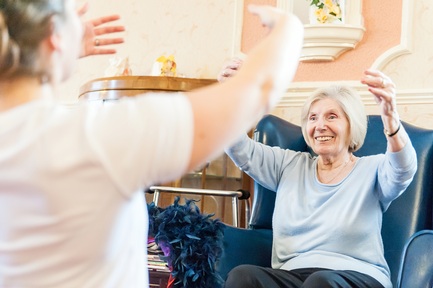
Faye O’Connor, who works with around ten care homes, says: “Initially I started to use dance in care homes having run an over 50’s dance exercise class and found great satisfaction in working with older people. I have since completed circle dance training and creative ageing training. After my first session that I delivered in a care home I was left feeling that something really special had happened.”
She has found care homes to be places where “many different people with many different stories have many different needs” and believes “dance in care homes is so important because it allows individuals to move in a way that they want to, interact in a different way with other residents and staff and also have the opportunity to reminisce about dancing days gone by”.
“Just to clarify when we say dancing we do not mean exercise to music where clear instructions are given and individuals copy the movements of an instructor. Dance is movement that is devised from feelings and ideas that explores individual movement ranges and responses that can be personally or socially significant,” she says.
Dance can calm people with dementia
Dementia researcher, Dr Azucena Guzmán García, carried out research a couple of years ago into dementia and dancing and found a popular dance from the streets of Mexico helped to calm people with dementia when they were agitated.
Her research revealed dancing improves mood, is good for physical wellbeing and also helps to strengthen the bond of trust between staff and residents.
Dr Guzmán García, who works at the Dementia Research Centre, North East London NHS Foundation Trust, said: “While dancing is often considered entertainment in care homes, I believe that it can be useful practice. I found that these dance classes helped calm agitation and improved mood and quality of life for people with dementia. There are also obvious advantages in terms of physical fitness.
“I witnessed the joy people got from taking part in the dancing and for residents who were watching, the laughter and happy memories it generated.”
Social interaction
She would like to see all care homes running “structured and regular dance sessions because of the benefits it brings in terms of behaviour and social interaction which means it can be considered positive for dementia care”.
Queen Margaret University in Edinburgh ran a similar project with its dance movement psychotherapy students using dance therapy with care home residents.
Dr Vicky Karkou, programme leader for the university’s MSc in Dance Movement Psychotherapy, found the initiative enabled “residents, some, for the first time, to explore their emotional difficulties through movement”.
Limited mobility
Everyone can benefit from dancing and so including all residents is vital, according to Ms O’Connor, who runs Xpress-Yourself. She has found some care home workers and activity coordinators let their perceptions of dance stop residents with limited mobility from taking part.
She says: “Dance allows the opportunity for tired, anxious and frail individuals to come to life as their posture changes in their chair to go into a dance hold that they remember. The individuals are encouraged to move as they want to and as long as they are moving safely there is no wrong way.
“Dance facilitated by the right person can encourage individuals who have limited mobility to become energised and full of expression smiling and laughing as they watch others enjoy dancing again and enjoy the sense of touch and connecting with others as well as developing their own sequences.”
For residents who are less mobile, Ms O’Connor says generally sessions are seated; the occasional individual will get up and have a dance in the middle, balance permitting.
Celebrate what they can do not what they can't
“For some individuals who are less mobile they may just enjoy the experience of watching the others dance. However having worked with individuals who have had serious restricted movement it is working with them to celebrate the movement that they can do opposed to what they cannot.

“During one session an individual who had a stroke resulting in him only being able to occasionally move his hands watched the parachute move up and down. His hand started to mirror the movement of the parachute and his face lit up because he felt as if he was contributing to the group effort.
“As a dancer it is also ensuring that my whole body is utilised, ensuring that for those who really are restricted, facial expression is engaging. It is amazing how people can get so much enjoyment from mirroring facial expressions. In each session every move is right so no one can feel that they are doing it wrong. My approach is person centred so following their lead is usually well received.”
Emotional and physical wellbeing
She believes dance impacts on care home residents’ emotional and physical wellbeing.
It can improve muscle tone, strength, endurance, fitness and help to prevent falls. Dance can also improve brain function on a variety of levels. For individuals who have dementia, dance provides a different way to express their self without getting frustrated about using language and enabling them to have a conversation without words, according to Ms O’Connor.
It can also be a valuable reminiscence tool. “Dance in the UK is a fundamental part of our social history. During World War II the dance hall offered a wartime escape for many people as they dressed up to visit and enjoy the splendour and the ambience of the dance halls and dance their worries away. Many people would have met their spouses at the dance hall and therefore have treasured memories of jumping, jiving and jitterbugging,” says Ms O’Connor, who was told by a resident “that piece of music took me right back to dancing at the Albert Hall as a Wren, dancing with American soldiers”.
Dancing is fun
Just as importantly, dance enables people to have fun in the present. “It is always wonderful when a relation or friend of an individual visits during a dance session and witnesses their loved ones smiling and having good quality experiences,” she says.
After all, what can be better than seeing a care home resident’s face “absolutely light up when you start to dance with him, his smile beaming from ear to ear”.
For more information on Xpress-Yourself go to http://www.fayeoconnordance.com/
Latest Features News
 25-Nov-19
2019 Election: Boris Johnson leaves social care in 'too difficult box' but Labour vows to end 'crisis'
25-Nov-19
2019 Election: Boris Johnson leaves social care in 'too difficult box' but Labour vows to end 'crisis'
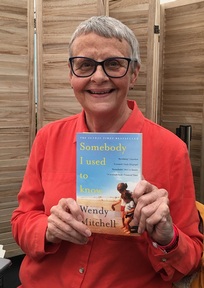 18-Oct-19
Podcast: Wendy Mitchell and dementia: 'My biggest fear is not knowing who my daughters are'
18-Oct-19
Podcast: Wendy Mitchell and dementia: 'My biggest fear is not knowing who my daughters are'
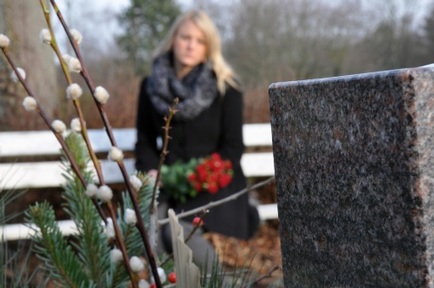 27-Sep-19
Exclusive: Care minister backs care workers' call for time off to grieve and attend funerals
27-Sep-19
Exclusive: Care minister backs care workers' call for time off to grieve and attend funerals
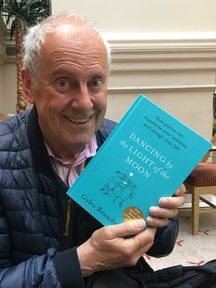 19-Sep-19
Podcast: Gyles Brandreth says poetry helps ward off dementia
19-Sep-19
Podcast: Gyles Brandreth says poetry helps ward off dementia
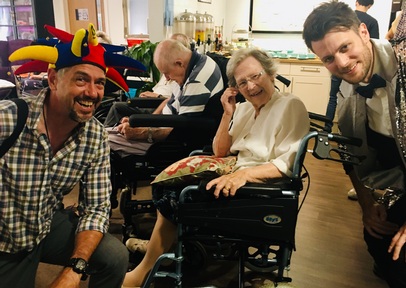 30-Aug-19
Edinburgh Fringe funnyman joins comics facing toughest audience at care home gig
30-Aug-19
Edinburgh Fringe funnyman joins comics facing toughest audience at care home gig